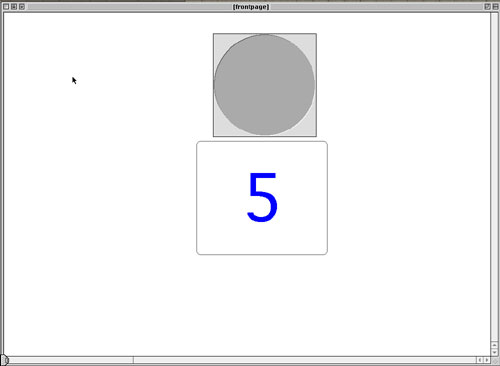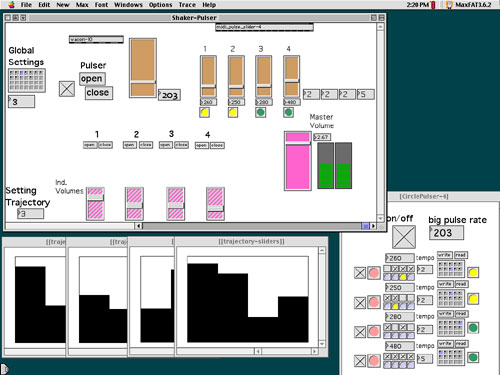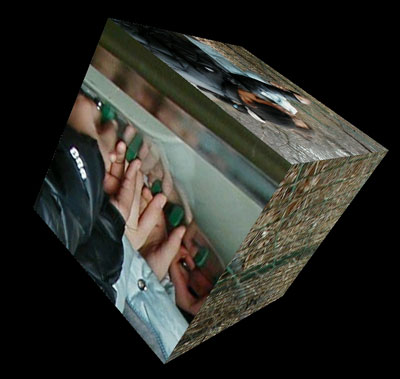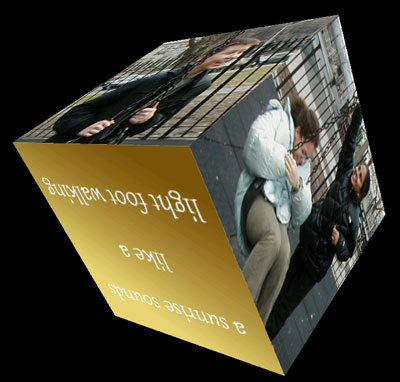
|
A Walk Through Harlem: Instruments introduction -- concept/preparation -- syllabus-- instruments --process/performance We ended up working with three instruments. The first, which we could call the "voice chorder," invited the kids to speak through a microphone (headset works best) and apply precomposed resonating chords to their voice with a Wacom tablet. As was my intention, the software had the most boring interface possible:
just a big number to let the player know what chord in the sequence they were on, if necessary, and a big button which lights up with the click the pen to move to the next chord. The interface is played by moving the pen across the tablet. Each corner represents one of the pitches of the current chord, and the closer the player moves to that corner, the more they emphasize that pitch. In the very center of the tablet, all four pitches are mixed equally. Tilting the pen effectively highlights higher or lower pitches, something like a subtle wah-wah pedal. Here's Leila performing with the Voice-Chorder. Watch a video clip of it as well. The instrument can also be set so that any sound is the source. In this example, a synthesized model of bamboo wind-chimes is controlled by the pressure of the pen and used to "ring" the chords. It was wonderful to watch the kids play with this instrument. They gradually became more comfortable hearing the sounds of their own voices amplified and transformed, and got a kick out of making music by finding the intersection between their voices and the physical control they had over the filters. A second instrument might be called the "finger mixer." This was used primarily with the sounds the kids recorded on their walk through Harlem. After picking out their favorite sounds, we assigned them to specific regions on the surface of the Tactex pad. By putting their hands on the pad, they could mix in the sounds in any combination they pleased, some softer or louder than others. It was interesting to hear them superimpose radically different sounds, and create kinds of phrases with them. We also configured it so they could mix in recordings of the sounds of their own voices. Here's Shameena playing the Finger Mixer. Watch a video clip of it as well. David built a fun and challenging sort of drum machine that he calls the Shaker-Pulser. Controlled with a bank of sliders, this instrument is a kind of multidimensional rhythmic cycler; small rhythmic cycles are triggered by larger cycles, all of which can be sped up or slowed down.
In this case, the sounds were synthesized versions of various kinds of shakers. Listen to Shameena play the Shaker-Pulser: clip 1, clip 2. David also developed a visual instrument that ended up providing a striking backdrop to the final piece. Images from the walk, and also text from the poems they wrote, were laid on the faces of a projected, three-dimensional cube. The images could be controlled -- "performed" -- and the cube manipulated -- rotated, enlarged, sped up. In the performance (described next), some of the cube's parameters were controlled by Shameena with the Tactex pad:
introduction -- concept/preparation -- syllabus-- instruments --process/performance
|




